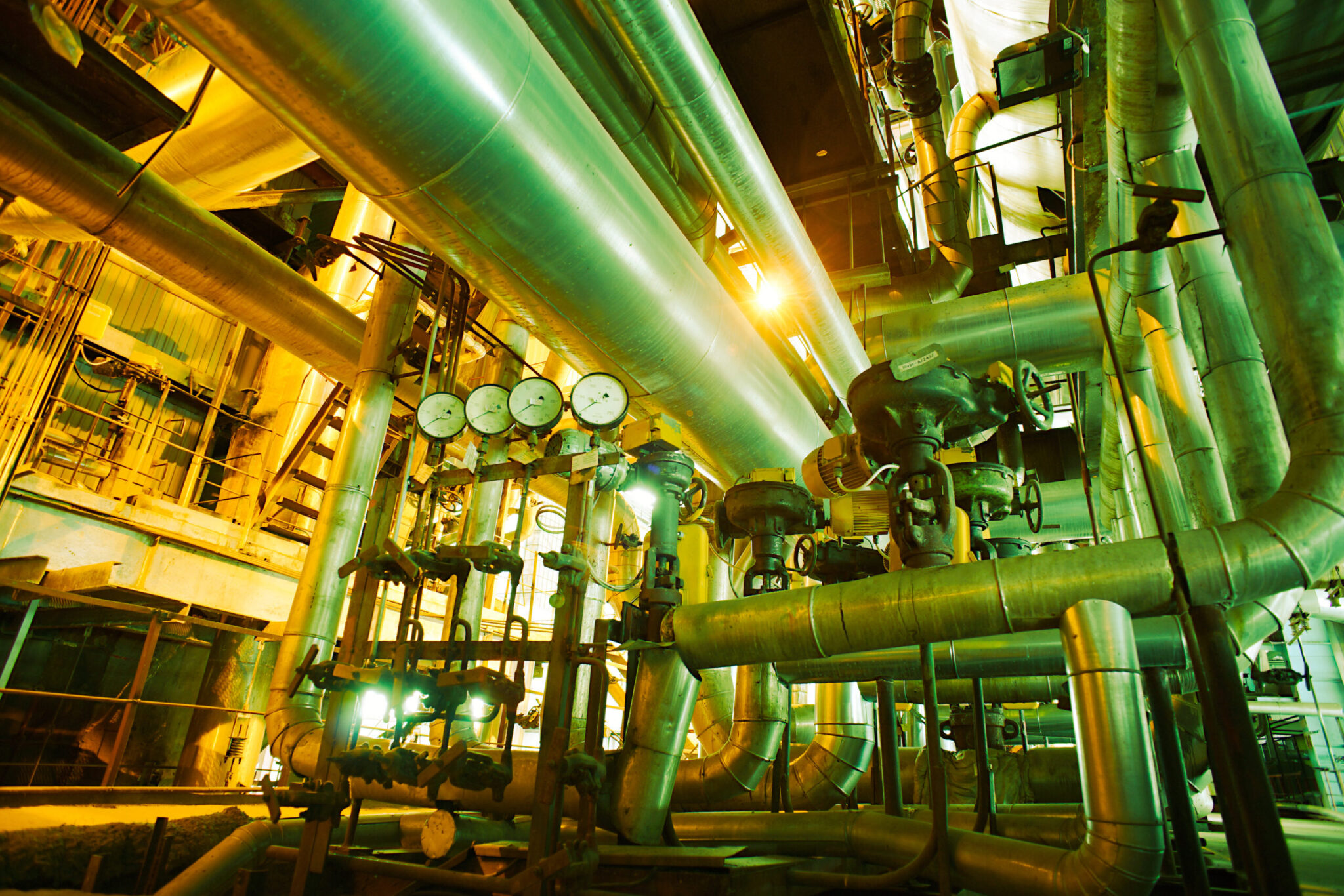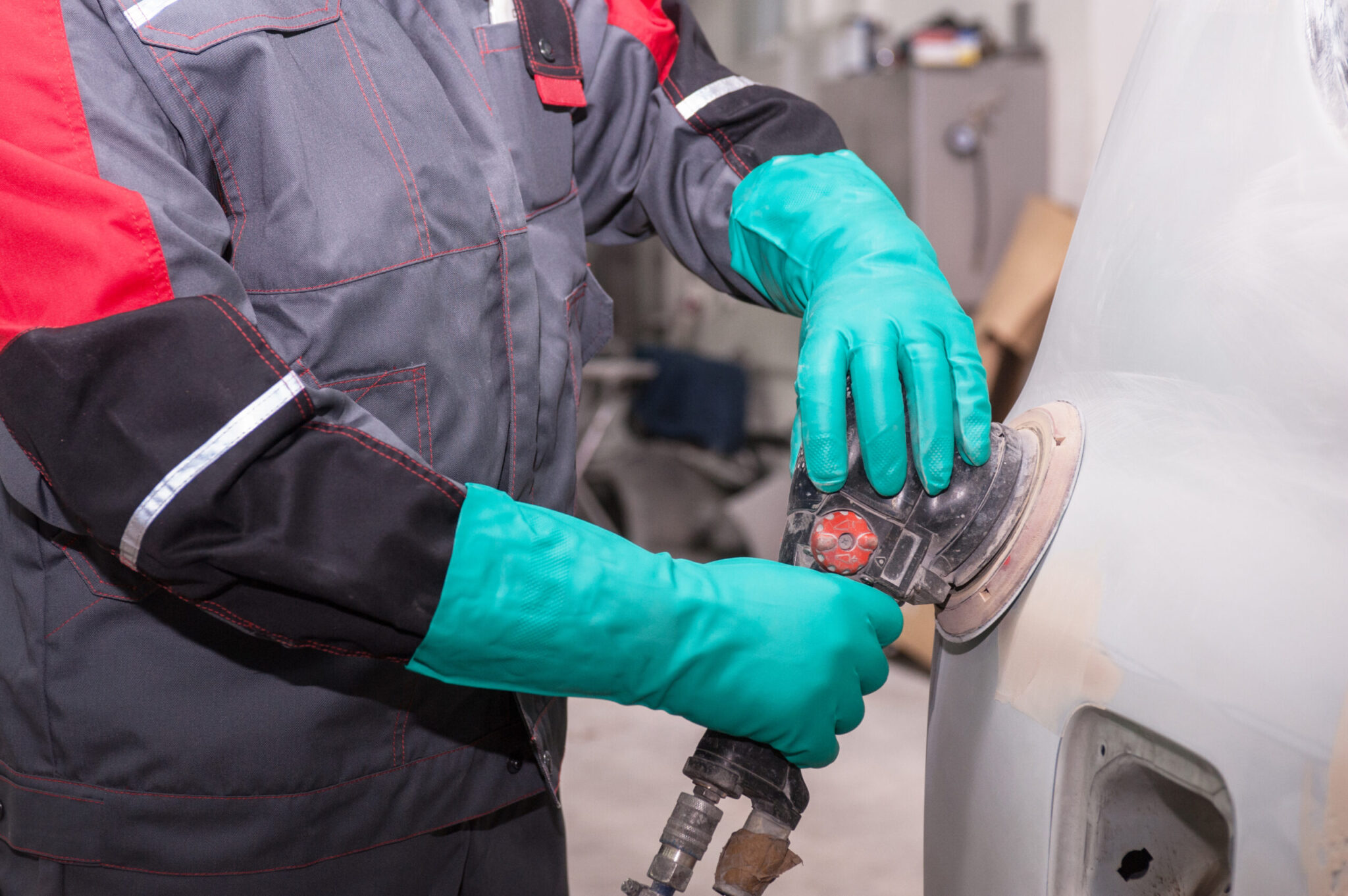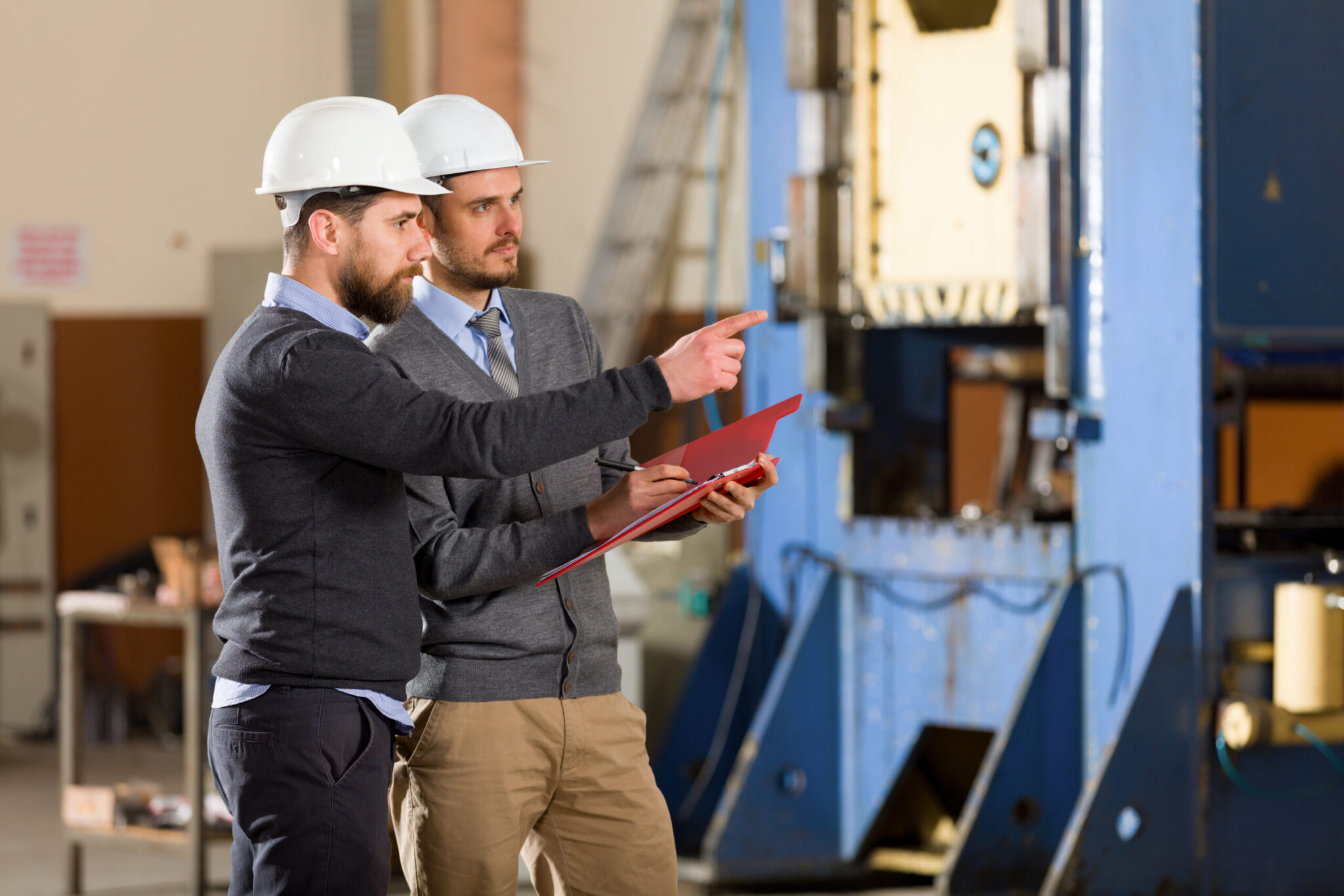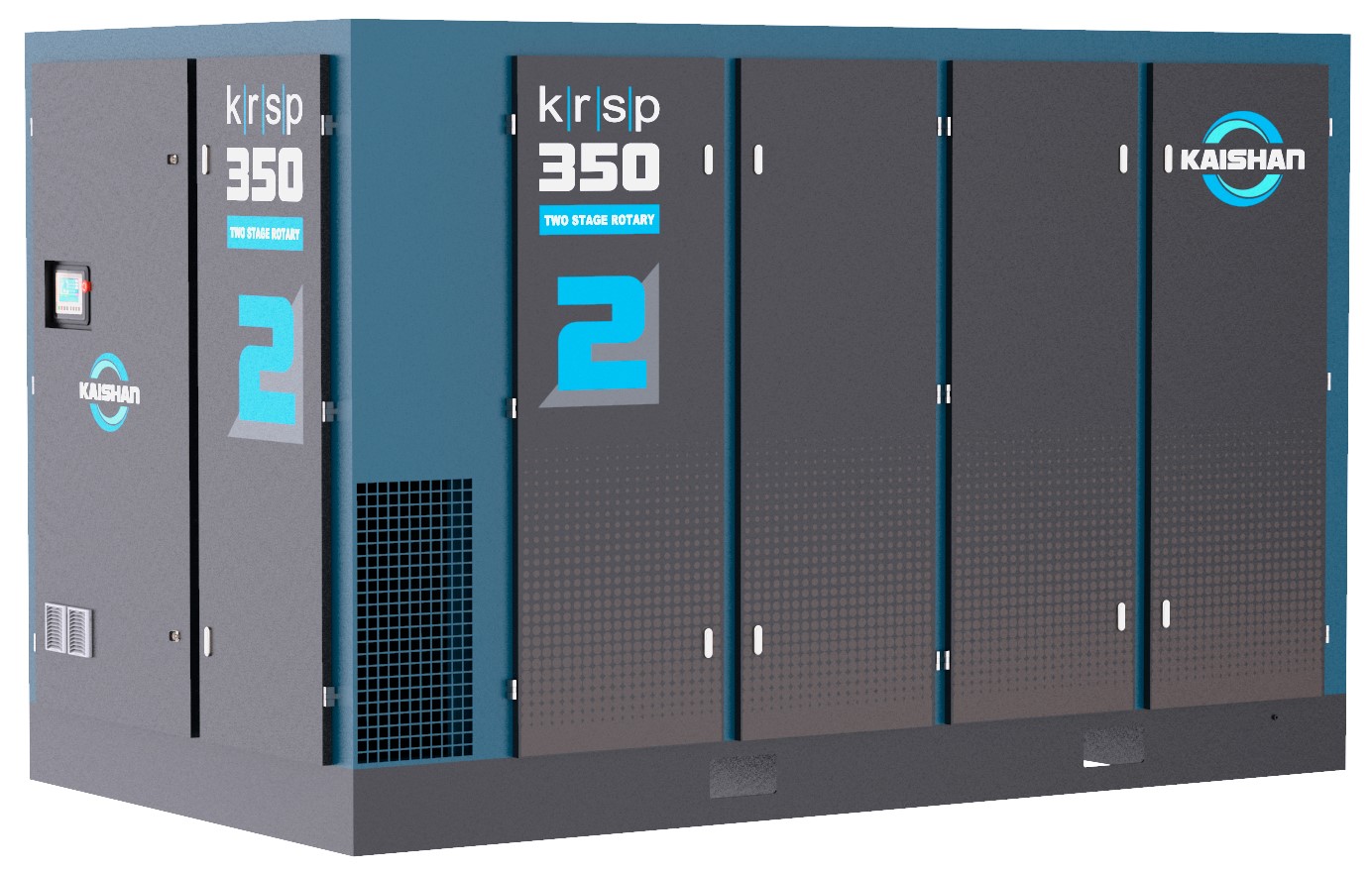
How to Maintain Your Air Compressor with Genuine Spare Parts
November 1, 2023
How to Choose the Best Air Compressor for Optimal Aviation Operations
November 22, 2023Plant Manager Essentials: Seven Steps for a Greener Production
Kaishan USA | November 08, 2023 | Uncategorized

Compressed air can help make manufacturing more sustainable, especially when you follow our energy-saving tips for efficient air compressor operation.
As the fourth utility supporting a wide range of processes in commercial and industrial facilities, compressed air offers a wealth of opportunities to advance your sustainability efforts. Especially in energy conservation.
For some processes, like wastewater treatment for example, compressed air consumes as much as 80% of the energy a plant uses, according to estimates from the U.S. Environmental Protection Agency and the U.S. Department of Energy.
That level of use creates a lot of room for plant managers to substantially improve energy consumption and sustainability by paying closer attention to compressed air systems in their plants. Not to mention cutting electrical costs.
In that spirit, we offer this essential guide to making compressed air systems more sustainable and energy efficient. It also provides some high-level guidance on air compressor systems for plant managers. As well as some nitty-gritty energy-saving tips they can apply right now.
Seven Energy-Saving Tips
1. Understand the Inverse Relationship Between Pressure and Flow
Most air compressors are designed to deliver a fixed amount of output, usually expressed as a set flow number (e.g., 100 CFM) at a set pressure (e.g., 100 PSIG). However, the two are inversely related—when you increase the pressure, you decrease the flow. And vice versa.
That inverse relationship between flow (CFM) and pressure (PSIG) often leads us to confusing discussions with our customers.
They tell us they’re not getting enough pressure at one of their critical applications like a disc sander, framing nailer or tire inflater. So, they bump up the pressure at their compressor. And it doesn’t work. Pressure actually drops. How can that be?
It may seem counterintuitive, but the problem usually is not a lack of pressure. Usually, it’s inadequate flow. Which means that the best way to get more pressure at the end of the line is to lower the pressure at the air compressor. That will boost the CFM and deliver more air flow to the tool at the desired pressure.

If you’re not getting the pressure you need at a remote application like a disc sander, you probably can’t solve the problem by boosting the pressure output from your air compressor.
2. Lower Your Pressure Band
Most compressors use load/no load controls, sometimes called online/offline. With this approach, you set a load pressure and an unload pressure, such as 115 PSIG and 125 PSIG, respectively.
That gap of 10 PSIG (pounds) is called the pressure band. The goal is to keep your compressor from loading and unloading too fast and starting and stopping too often because it wears out the machine and can exceed maximum starts per hour on electrical components.
But if you have two or three compressors that aren't tied into each other electronically, you could be loading at 110 PSIG and unloading at 120 PSIG on one machine. With another at 115 to 125 and the last at 120 to 130 PSIG.
That’s a lot of wasted energy, especially if your plant needs 100 PSIG and you're compressing up to 130. The rule of thumb is that for every 2 PSIG increase in pressure, the energy consumption goes up by 1%. You can conserve energy by setting the header pressure as low as possible.
3. Avoid Rapid Cycling
Unfortunately, the transition between the load and no-load states mentioned above does not occur as rapidly as we might like. It takes several seconds for the internal pressure to be relieved.
As often happens, the compressor may switch back into the loaded state before the transition to the no-load state is complete. If that happens too frequently, it can lead to rapid cycling, which is extremely inefficient. There are several reasons why your compressor may get locked into rapid cycling:
-
- Your compressor is oversized
- Your pressure band is too tight
- Your system needs more storage
- All of the above
In addition to decreasing efficiency, rapid cycling can cause other problems, including increased wear and tear and reduced compressor lifespan. It can also lead to overheating, which can be a safety hazard.
4. Stop Leaks
Compressed air systems lose between 30% and 50% of their volume to air compressor leaks, with poorly maintained systems running as high as 80%.
As a result, one of your first tasks is determining how many leaks you have. And estimating how much you can save by fixing them. (To find out how much you might save with an audit by an air compressor professional, see our blog post, “How an Air Compressor Audit Can Reduce Operating Costs.”)
Handheld leak detection devices have been available for some time and have been successful at helping companies locate the 80% of compressed air leaks that are not in the audible range.
But now there are newer, visual, acoustic imaging devices known as ultrasonic leak detection systems. They use multiple directional microphones to triangulate the position of a leak source, overlaying the leak’s ultrasonic “signal” on a video image of your plant.
Even more importantly, the device calculates the leak volume and the potential savings you can achieve by fixing it. For example, if the leak is in a pipe 30 feet above the plant floor, the system will provide a cost estimate of the annual savings. Then you can decide whether it’s worth worrying about. Specifically, whether it’s worth putting up scaffolding or bringing in a lift.
The device can then do a printout you can give your maintenance people, enabling them to find and fix the leak.

Ultrasonic leak detection can help you pinpoint sources of leaks in your compressed air system, like this illustration of the Fluke ii900 Industrial Acoustic Imager.
For more information on fixing links, see our blog post, “How to Find and Stop Air Leaks.”
5. Heat Recovery
In northern climates, it’s possible to save significant amounts of energy by recovering the heat removed from the compressed air system in the winter. A damper directs the air toward an outside vent in the summer. In the winter, the air goes toward space heating or preheating other operations.
Removing the excess heat does have an upside: most of that energy can be converted for use in other parts of your enterprise, for space heating, preheating boiler water, water heating or even process heating (like drying).
We’re talking about a substantial benefit. In most cases, at least 70% to 80% of the energy used to compress the air becomes waste heat. And Air Best Practices says 90% of that heat loss can be recovered, while Manufacturing.net places the figure as high as 96%.
For more on the subject, see our blog post, “Compressor Room Design.”
6. Maintenance
Maintaining your compressed air system is one of the most important energy-saving tips. One classic example is air filters. Dirty filters restrict the air that enters your compressor’s intake, making your system less efficient. Even a two-PSI pressure drop caused by blocked filters will raise your energy consumption by an average of 1%.
As a result, establishing a consistent maintenance program that you follow closely will reduce your energy consumption and environmental footprint. It will ensure you deliver high-quality compressed air, save money and prolong the life of your air compressor, other components in your air compressor system and even the equipment the system is servicing.
Industry research has proven that a proactive maintenance strategy can help you reduce maintenance costs by as much as 70%.
The goal of preventive maintenance is to anticipate problems before they happen, addressing compressor issues that could worsen and lead to a shutdown. A good preventive maintenance program will reduce energy consumption and lower utility bills. And you’ll have lower service and replacement costs and fewer costly shutdowns. The result? Fewer instances of lost production time and the associated labor and overtime costs.

Regular walk-throughs with a maintenance professional can help you turn your air compressor system into a competitive advantage.
7. Replace Diesel Backups
Many companies use diesel-powered compressors as backups when a main air compressor goes down.
Unfortunately, that solution, though it gives you flexibility, is expensive, costing two to four times more. Plus, it produces a lot of emissions, and the air is of lower quality—most portable diesel air compressors do not include an aftercooler, so they send wet air to the dryer, making it work harder.
In addition, there are significant maintenance costs: a portable diesel compressor will need oil and filters every 250 hours. If you’re operating 24/7, that could mean they need maintenance every ten days. And then there’s a problem of supplying the unit with diesel fuel every 12 hours.
Electric air compressors can offer the same level of flexibility with significant energy savings. Plus, their maintenance is much less of an issue. They will need regular maintenance every three months or 2,000 operating hours, whichever comes first.
Your Energy-Efficient Choice
Kaishan’s rotary screw air compressors are known for their energy efficiency, as well as their reliability and ability to produce high-quality compressed air. Our KRSP2 premium two-stage rotary screw air compressor is one of the most energy-efficient machines on the market.

Kaishan’s KRSP2 premium two-stage rotary screw air compressor is one of the most energy-efficient machines available.
Because the second stage builds on the pressure created in the first, a two-stage compressor like the KRSP2 will generate more compressed air for less energy.
A two-stage air compressor like the KRSP2 will produce up to 15-20% more flow in the same size air compressor, decrease overall power costs and have a longer life with reduced downtime. That’s a payback that will generally recoup the price difference quickly.
Unsurpassed Warranties
Because of their reliability, efficiency and long life, Kaishan rotary screw air compressors have the best warranties in the industry. Our standard warranty covers the complete compressor package for 12 months from the date of startup (or 18 months after it’s shipped, whichever comes first), with an airend warranty of 24 months. With our extended warranties, Kaishan’s KRSP and KRSP2 screw compressors are backed by a lifetime warranty on the airend.

Kaishan’s KRSP and KRSP2 screw compressors are backed by an unmatched lifetime airend warranty.
Local Help
Kaishan USA works with a nationwide network of independent distributors, who can provide on-site help and consultation as needed. These factory-trained air compression experts have an investment in their local communities and can help you implement any of these energy-saving tips. They can help you select the right air compressor for your needs and supply the support and service you need to keep your air compressor system performing with industry-leading efficiency and reliability.
Key Takeaways
-
- Plant managers can substantially improve energy consumption and sustainability by paying closer attention to their compressed air systems.
- You can conserve energy by setting the header pressure on your compressed air system as low as possible.
- Compressed air systems lose between 30% and 50% of their volume to air compressor leaks.
- Replacing diesel backups with electric air compressors will give you significant energy savings without sacrificing flexibility.
- Kaishan’s KRSP and KRSP2 screw compressors are backed by an unmatched lifetime aired warranty.
Let Us Help
Your rotary screw air compressor can help you meet your sustainability goals if you follow our energy-saving tips. If you need help implementing any of them, get in touch with the experts at Kaishan. Contact us today.
Random stat or
customer quote
textXXtext
text
Compressed air offers a wealth of opportunities to advance your sustainability efforts.

